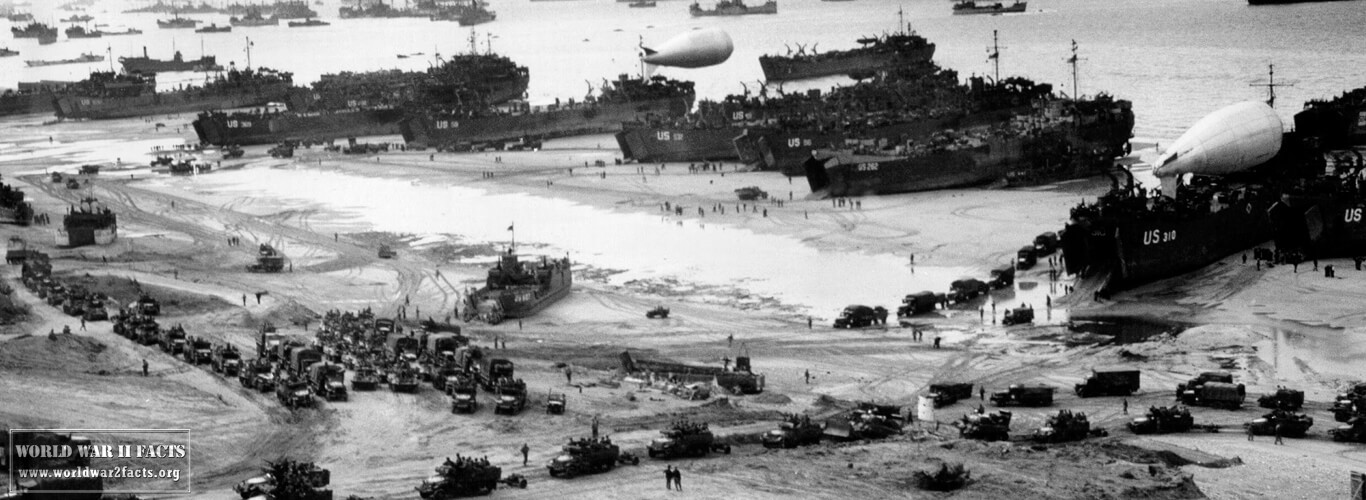World War 2 Planes Facts
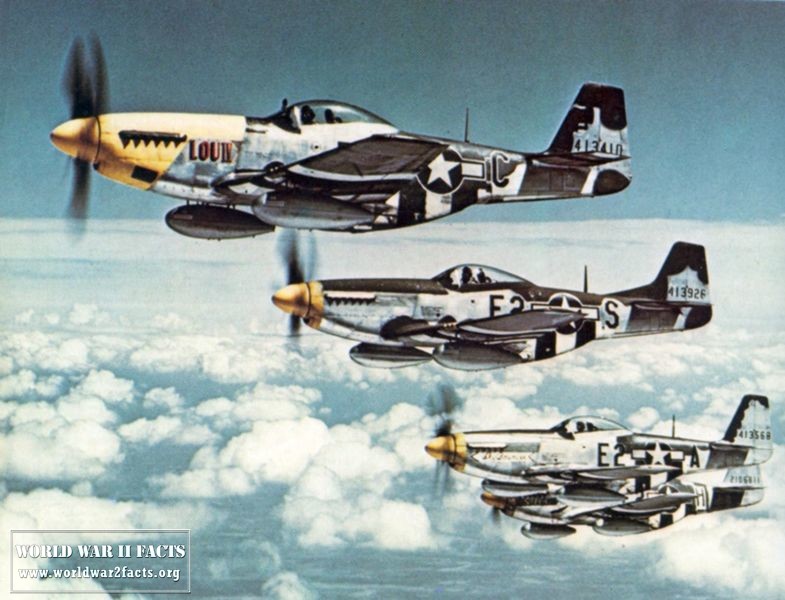 P-51 Mustangs of the 375th Fighter Squadron, 361st Fighter Group, Eighth Air Force mid-1944. The aircraft second from the camera has the newly-introduced dorsal fin.
P-51 Mustangs of the 375th Fighter Squadron, 361st Fighter Group, Eighth Air Force mid-1944. The aircraft second from the camera has the newly-introduced dorsal fin.Best Planes of WW2
Contents
- Best Planes of WW2
- WW2 American Fighter Planes
- WW2 British fighter planes
- WW2 Japanese fighter planes
- WW2 German fighter planes
- What was the Best Fighter in World War 2?
- WW2 Fighter Planes – Complete List
- World War 2 Attack Planes
- WW 2 Bomber Aircraft
- World War 2 Flying Boats and Sea Planes
- World War 2 Transport Planes
- World War 2 Planes References
World War 2 saw more technological leaps in military aircraft than in any other conflict. Between 1939 and 1945, World War 2 planes evolved to the point the jet engine was introduced, and even the first cruise missile would see its first use by the Axis powers. Significant advances were made on both sides concerning developments in speed, maneuverability, altitude, and armament.
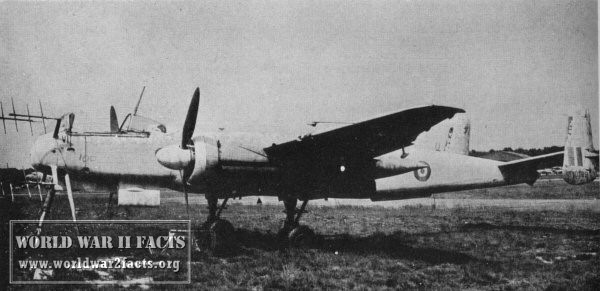
By the end of WW2, the aircraft carrier would replace the battleship as the center of gravity for the Axis and Allied powers’ navies. When one compares the aircraft employed at the start of the war to the end, there were sometimes multiple generations of technology deployed by both sides compared to the outbreak of hostilities in 1939.
WW2 American Fighter Planes
Initially, Germany had a clear advantage in the air, with their Messerschmitts proving incredibly maneuverable and deadly when used correctly. The Allies were quick to respond, however, with the P-51 Mustang being one of the most effective Allied fighters during the conflict, delivering long-range escorting missions that significantly reduced the enemy’s ability to strike deep into Allied territory.
America produced several famous and widely used fighter planes during WW2, such as the P-51 Mustang, F4U Corsair, and P-47 Thunderbolt. The Mustang was a fast and reliable aircraft, making it an ideal long-range escort fighter. The F4U Corsair was one of the first carrier-based fighters, while the P-47 Thunderbolt was renowned for its durability and ruggedness.
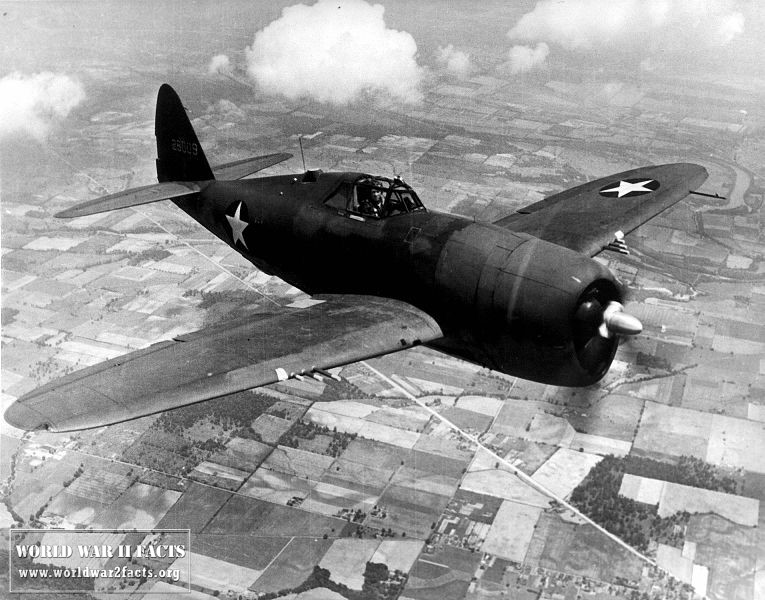
WW2 British fighter planes
The British also made their mark with the Spitfire, symbolizing hope against the Axis forces. It was Britain’s primary single-seat fighter throughout much of the war, and it showcased both speed and maneuverability. Later in the conflict, Britain deployed the Hawker Tempest, an aircraft designed to counter the Messerschmitt jets that the Germans had introduced.
The British Royal Air Force’s Spitfire and Hurricane fighters served heroically during WW2, especially during the Battle of Britain. The Spitfire was an agile and fast fighter plane, while the Hurricane was more rugged and dependable. Both played a crucial role in protecting Britain against German attacks.

WW2 Japanese fighter planes
Japan produced two effective fighters during WW2 – the Mitsubishi A6M Zero and Nakajima Ki-43 Oscar. The Zero was considered one of the finest fighter planes of the war, though its lack of range somewhat hampered it. The Oscar was a fast and versatile fighter who could compete with Allied counterparts.
WW2 German fighter planes
Germany developed several advanced fighter planes during WW2, including the Messerschmitt Bf 109 and Focke Wulf 190. The Bf 109 was the Luftwaffe’s primary fighter plane throughout the war, while the FW 190 was renowned for its maneuverability and speed. Both were highly effective at downing Allied bombers and reconnaissance aircraft.
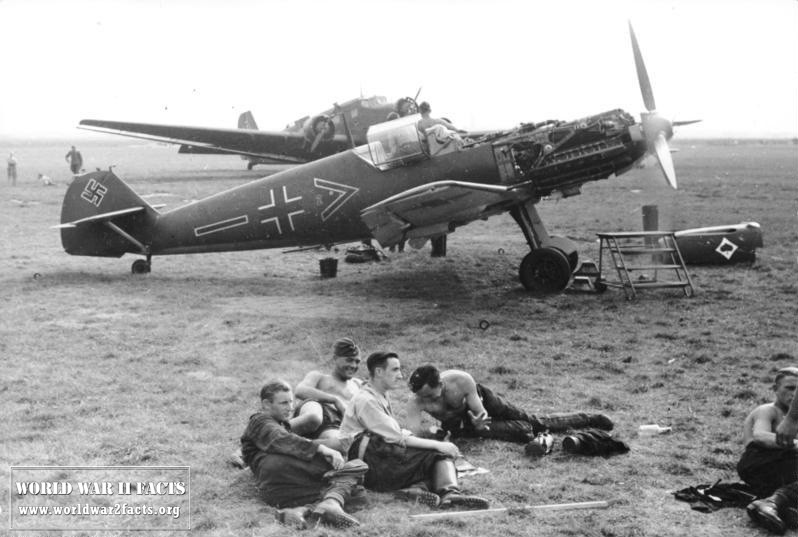
World War 2 also saw several other countries develop fighter planes, such as Italy’s Fiat G.50 Freccia and France’s Dewoitine D.520. However, these aircraft managed to match the performance of the top German and Allied fighters. The combination of superior Allied numbers and technology ultimately led to a decisive victory for the Allies in World War 2.
World War 2 Fighter Pilot Video
What was the Best Fighter in World War 2?
This is a difficult question regarding how fast technology developed throughout the war. Planes that were dominant earlier in the war would not be so later in the war in the same theater of operations. Some of the top airplanes going from oldest to newest during the war include the Bf 109, the British Spitfire, the Japanese Zero, the FW 190, the U.S. P-47 and P-51, and the Me 262. Another quality of dominant World War 2 fighters was the capacity the building country had for producing the airframe in sufficient enough quality to impact the battlefield.

British Spitfire
Early in the European Theater of war, the two standout fighters were the British Spitfire and the German Messerschmitt Bf 109 of the German Luftwaffe. Both aircraft were limited by their range but stood out as the superior dogfighting aircraft early in the war. As the war progressed in the European Theater, the Focke-Wulf 190 started to appear in numbers by the Germans and demonstrated superiority over the Spitfire, which was already having trouble with the Bf 109F fighter. The U.S. debuted the P-39 and P-40 fighters in 1942, with the P-47B seeing the operation in 1943. At the end of 1943, the P-51B Mustang started seeing action in Europe by the United States and became the dominant fighter of the war.
Japanese Zero
In the Pacific Theater of war, the Japanese Zero, or Mitsubishi A6M5, was the dominant fighter early in the war. The fighter was also known as the Japanese Navy Type 0 carrier-borne fighter and could not be matched by the American fighters early in the war. The Zero was faster, more maneuverable, and could outrange all fighters in the American inventory. The P-38 Lightning would be the US Army Air Corps workhorse of World War 2, shooting down more Japanese planes than any other model. It featured an incredibly long range, and the twin engines made the model suitable for long over-water flights.

F4U Corsair
Later in the war, the Americans would debut the F4U Corsair. The fighter saw action with the U.S. Navy and Marine Corps and featured the R-2800-2 Double Was engine, the most powerful in the world. The engine had a twin-row, 18-cylinder radial engine, which would produce 1,850 Horse Power in the initial version. The most distinctive feature of the aircraft was its inverted gull wing which was made to raise the nose of the airplane higher off the ground without lengthening the undercarriage. The Corsair entered production in the fall of 1941 and first reached action in the Pacific campaign to support the Marines on Guadalcanal in the Solomon Islands in February of 1943. The Corsair would prove dominant over the Japanese Zero and would constantly be improved, seeing production well after World War 2 to 1953.
WW2 Fighter Planes – Complete List
- Avia B-534 (Pre-war; Slovakia, Bulgaria)
- Bell P-39 Airacobra (1941; United States, Soviet Union)
- Bell P-63 Kingcobra (1942; United States, Soviet Union)
- Bloch MB.151 (Pre-war; France, Greece)
- Bloch MB.152 (1939; France, Romania)
- Boeing P-12 (1930; United States, Philippines, Thailand)
- Boeing P-26 Peashooter (1933; United States, China, Philippines, Guatemala)
- Brewster Buffalo (1939; United States, Finland, Netherlands, New Zealand, United Kingdom, Australia)
- Bristol Beaufighter (1940; United Kingdom, Australia
- Bristol Blenheim ( France, United Kingdom )
- Boulton Paul Defiant (1939; England, Canada, and Poland)
- Blackburn Roc (1939; England)
- Curtiss Hawk 75 (Pre-war; United States, Finland, France, India, Thailand, United Kingdom, Netherlands)
- CAC Boomerang ( Australia)
- Curtiss P-40 Tomahawk/Kittyhawk/Warhawk (1939; United States, Australia, Canada, China, New Zealand, South Africa, United Kingdom)
- Curtiss P-60 (United States)
- Curtiss-Wright CW-21 (1939; United States, China, Netherlands)
- de Havilland Mosquito (1941; United Kingdom, Canada)
- de Havilland Vampire (1945; United Kingdom)
- Dewoitine D.520 (1940; France, Bulgaria, Belgium)
- Dornier Do 335 (1944; Germany)
- Fairey Firefly (1941; United Kingdom, Canada, Australia, Netherlands, Thailand)
- Fairey Fox (Pre-war; United Kingdom, Belgium)
- Fiat CR.42 (Pre-war; Italy, Belgium, Hungary)
- Fiat G.50 (Italy, Finland, NDH)Fiat G.55 (1943; Italy)
- Focke-Wulf Fw 190 (1941; Germany
- Fokker D.XXI (Pre-war; Netherlands, Finland)
- Fokker G.I (Pre-war; Netherlands)
- Gloster Gladiator (Pre-war; United Kingdom, Finland, Norway, Belgium)
- Gloster Meteor (1944; United Kingdom)
- Grumman/General Motors F4F/FM Wildcat (1940; United States, United Kingdom)
- Grumman F6F Hellcat (1943; United States, United Kingdom)
- Grumman F8F Bearcat (United States, United Kingdom)
- Hawker Hurricane (1937; United Kingdom, Canada, Finland, India, New Zealand, Belgium)
- Hawker Typhoon (1940; United Kingdom)
- Hawker Tempest (1944; United Kingdom, New Zealand)
- Heinkel He 112 (Pre-war; Germany, Romania)
- Heinkel He 162 (1945; Germany)
- Heinkel He 219 (1943; night fighter; Germany)
- IAR 80 (1942; Romania Romania)
- Ikarus IK 2 (1933; Kingdom of Yugoslavia, NDH)
- Junkers Ju 88 (1940 as a night fighter; Germany)
- Kawanishi N1K-J (1944; Japan)
- Kawasaki Ki-45 (1942; Japan)
- Kawasaki Ki-61 (1943; Japan)
- Kawasaki Ki-100 (1945; Japan)
- Kawasaki Ki-102 (1945; Japan)
- Lavochkin LaGG-1 (Pre-war; Soviet Union)
- Lavochkin LaGG-3 (1941; Soviet Union)
- Lavochkin La-5 (1941; Soviet Union)
- Lavochkin La-7 (1941; Soviet Union)
- Yak-15 (1939; Soviet Union)
- Lockheed P-38 Lightning (1941; United States)
- Lockheed P-80 Shooting Star (1945; United States)
- Macchi MC.200 (1939; Italy)
- Macchi MC.202 (1941; Italy)
- Macchi MC.205 (1943; Italy)
- MÁVAG Héja (1941; Hungary)
- Messerschmitt Bf 109 (Pre-war; Germany, Kingdom of Yugoslavia, Bulgaria, Finland, Hungary, Romania, Italy)
- Messerschmitt Bf 110 (Pre-war; Germany)
- Messerschmitt Me 163 (1943; Germany)
- Messerschmitt Me 262 (1944; Germany)
- MiG-1 (1940; Soviet Union)
- MiG-3 (1941; Soviet Union)
- Mitsubishi A6M Zero (1940; Japan)
- Mitsubishi J2M (Japan)
- Mitsubishi F1M (Japan)
- Morane-Saulnier M.S.406 (1939; France, Finland)
- Nakajima A6M2-N (1942; Japan)
- Nakajima Ki-27 (Pre-war; Japan, Thailand)
- Nakajima Ki-43 (1941; Japan, Thailand)
- Nakajima Ki-44 Japan
- Nakajima Ki-84 (1943; Japan)
- North American P-51 Mustang (1942; United States, United Kingdom, Canada, Australia)
- North American P-64 (NA-68) United States)
- Northrop P-61 Black Widow (1944; United States)
- Polikarpov I-15 (Pre-war; Soviet Union)
- Polikarpov I-16 (Pre-war; Soviet Union, China)
- PZL P.7 (Pre-war; Poland)
- PZL P.11 (Pre-war; Poland, Romania)
- PZL P.24 (Pre-war; Greece, Romania)
- Reggiane Re.2000 (Italy, Hungary)
- Reggiane Re.2001 Italy
- Reggiane Re.2005 (1943; Italy)
- Republic P-43 Lancer (China, United States)
- Republic P-47 Thunderbolt (1942; United States)
- Rogozarski IK-3 (Kingdom of Yugoslavia)
- Ryan FR Fireball (1945; United States)
- Supermarine Seafire ( United Kingdom, Australia, Canada, India, New Zealand, South Africa)
- Supermarine Spitfire (1938; United Kingdom, Australia, Canada, India, New Zealand, South Africa)
- Seversky P-35 United States)
- VL Myrsky (1943; Finland)
- Vought F4U Corsair United States, United Kingdom, New Zealand)
- Vought Goodyear F2G Corsair (1945; United Kingdom, New Zealand)
- Vultee P-66 Vanguard United States, China)
- Yakovlev Yak-1 (1940; Soviet Union)
- Yakovlev Yak-3 (1943; Soviet Union)
- Yakovlev Yak-7 (1942; Soviet Union)
- Yakovlev Yak-9 (1942; Soviet Union)
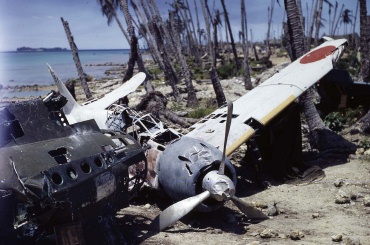
World War 2 Attack Planes
- Aichi D3A (1937; Japan)
- Aichi B7A (1945; Japan)Brewster SB2A Buccaneer (1941; United States)
- Bristol Beaufort (1940; British Commonwealth)
- Blackburn Skua (1938; England)
- Curtiss SB2C Helldiver (1943; United States)
- Douglas A-20 Havoc (1941; United States)
- Douglas A-26 Invader (1943; United States)
- Douglas SBD Dauntless (1940; United States)
- Douglas TBD Devastator (1935; United States)
- Fairey Albacore (1940; United Kingdom)
- Fairey Barracuda (1942; United Kingdom)
- Fairey Swordfish (1936; United Kingdom)
- Grumman TBF Avenger (1942; United States)
- Hawker Typhoon (1941; United Kingdom, New Zealand)
- Henschel Hs 129 (1938; Germany)
- Ilyushin Il-2 (1941; Soviet Union)
- Junkers Ju 87 (1937; Germany, Bulgaria)
- Mitsubishi Ki-30 (Japan, Thailand)
- Nakajima B5N (1938; Japan)
- Nakajima B6N (1942; Japan)
- Northrop A-17 ( 1935 ;United States)
- Petlyakov Pe-2 (1941; Soviet Union)
- Rogozarski R-100 (1938; Kingdom of Yugoslavia, NDH)
- Vultee A-31 Vengeance (1942; United States)
- Yokosuka D4Y (1942; Japan)
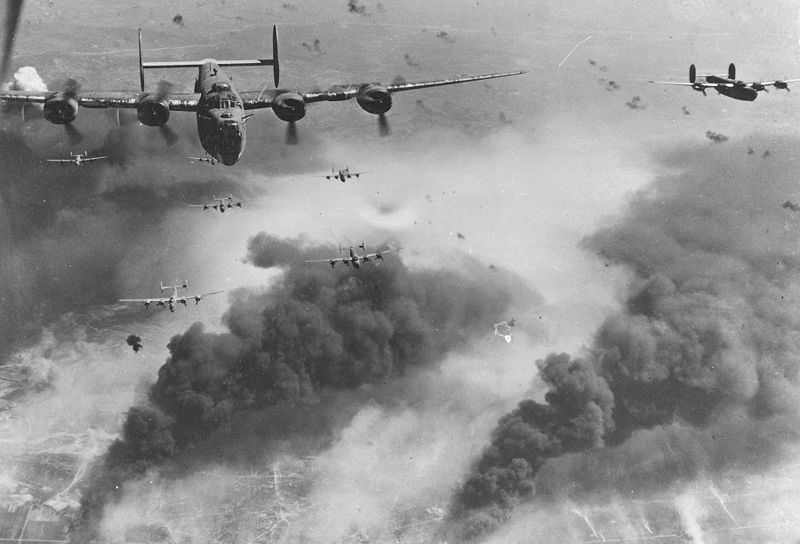
WW 2 Bomber Aircraft
- Amiot 143 (1936; France, India)
- Arado Ar 234 (1944; Germany)
- Armstrong Whitworth Whitley (1937; United Kingdom)
- Avro Manchester ( United Kingdom)
- Avro Lancaster (1942; United Kingdom)
- Bloch MB.210 (1937; France)
- Boeing B-17 Flying Fortress (1940; United States)
- Boeing B-29 Superfortress (1940; United States)
- Bristol Blenheim (1937; United Kingdom, Kingdom of Yugoslavia )
- CANT Z.1007 (1938; Italy)
- Consolidated B-24 Liberator (1940; United States)
- Consolidated B-32 Dominator (1942; United States)
- Dornier Do 17 (1937; Germany, Kingdom of Yugoslavia)
- Dornier Do 217 (1941; Germany)
- Douglas A-20 Havoc (1941; United States, United Kingdom)
- Douglas A-26 Invader (1944; United States)
- Douglas B-18 Bolo (1936; United States)
- Fairey Battle (1937; United Kingdom)
- Fiat BR.20 (1938; Italy)
- Focke-Wulf Fw 200 Condor (1940; Germany)
- Fokker C.X (1933; Netherlands, Finland)
- Handley Page Halifax (1940; United Kingdom)
- Handley Page Hampden (1938; United Kingdom)
- Heinkel He 111 (1936; Germany)
- Heinkel He 177 (1943; Germany)
- Ilyushin Il-4 (1938; Soviet Union)
- Ilyushin Il-6 (Soviet Union)
- Junkers Ju 88 (1938; Germany)
- Kawasaki Ki-48 (1940; Japan)
- Keystone B-3A (1936; United States, Philippines)
- Liore et Olivier LeO 451 (1939; France)
- Lockheed A-29 Hudson (1939; United States)
- Lockheed PV-1/-2/B-34/-37/R-37 Ventura (1942; United States, British Commonwealth, United Kingdom)
- Martin A-22 Maryland (1939; France, United Kingdom
- Martin A-30 Baltimore United States, United Kingdom
- Martin B-26 Marauder (1941; United States)
- Martin 139 WS (Netherlands, Thailand)
- Mitsubishi G3M (1937; Japan)
- Mitsubishi G4M (1941; Japan)
- Mitsubishi Ki-21 (Japan, Thailand)
- Nakajima Ki-49 (1938; Japan)
- North American B-25 Mitchell (1941; United States)
- Pe-8 (1936; Soviet Union)
- Piaggio P.108 (1942; Italy)
- PZL.23 Karaś (1936; Poland)
- PZL.37 Łoś (1938; Poland)
- Savoia-Marchetti SM.79 (1937; Italy)
- Savoia-Marchetti SM.81 (1935, Italy)
- Short Stirling (1940; United Kingdom)
- Sukhoi Su-2 (1937; Soviet Union
- Tupolev SB (1934; Soviet Union)
- Tupolev Tu-2 (1944; Soviet Union)
- Vickers Wellington (1938; United Kingdom)
- Yokosuka P1Y (1945; Japan)
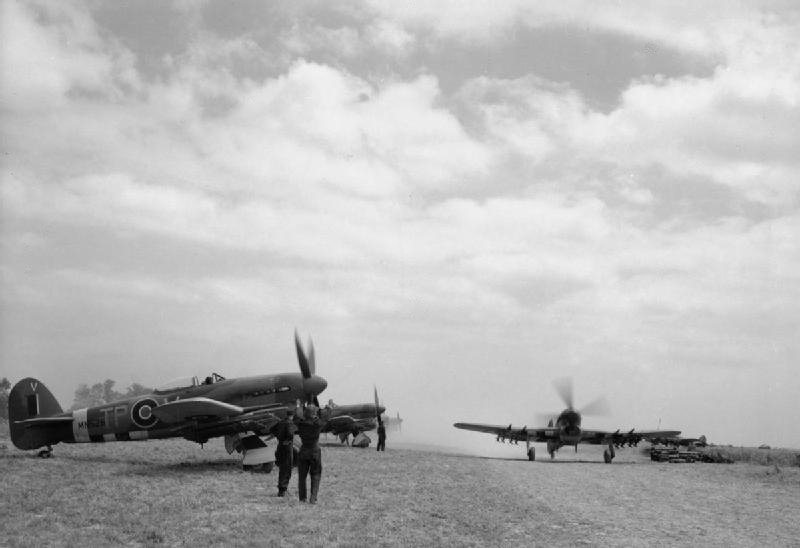
World War 2 Flying Boats and Sea Planes
World War II saw technological advances being made across the globe. From ships to tanks and aircraft to submarines, wartime innovations unlocked a new era of warfare that is still influences today. One area of innovation, in particular, was in the field of aircraft, especially the great flying boats and seaplanes used by the various nations involved. Let’s look at some of the most notable aircraft from World War II.
Horten HO 229
The Horten HO 229 was one of the first truly advanced jets designed for use during WWII. It was also the first jet fighter to be designed as a “flying wing”, meaning it had no tail or vertical stabilizers. This gave the aircraft an incredibly aerodynamic profile that allowed it to reach incredible speeds, even compared to other planes of its time. The plane was powered by four turbo engines and could reach up to 485 mph speeds. Though the German air force never officially adopted the plane, it still symbolized their technological advancements and tactical prowess.
Grumman G-21 Goose
Developed in 1937, the Grumman G-21 Goose was a twin-engine amphibious (or “floatplane”) aircraft primarily used for reconnaissance missions over the seas. It was considered one of the best floatplanes of its time and was widely used by American forces during WWII. Interestingly, though it was meant for operation over water, it was actually designed with very few modifications for use over land as well! It’s easy maneuverability in aquatic and terrestrial environments made it a favorite among pilots everywhere.
Consolidated PBY Catalina
One of the most recognizable seaplanes from WWII, the Consolidated PBY Catalina was an all-purpose aircraft used for everything from reconnaissance to underwater bombing missions. It was known for its ability to stay aloft for incredibly long periods – up to 28 hours without refueling! This enabled it to perform missions deep behind enemy lines or provide extended air cover. It was also equipped with a turret gunner position, making it an effective combat plane.
Vought F4U Corsair
The Vought F4U Corsair was an iconic American fighter plane used extensively by US forces during the war. It featured distinctive gull wings and twin radial engines, giving it exceptional speed and maneuverability. It was favored among pilots for its versatility and power, allowing it to take on many different roles in combat. Notable for its performance against Japanese fighters, the F4U became the most successful Allied fighter plane of WWII in the Pacific Theater.
Complete List of WW2 Flying Boats & Sea Planes
| Aircraft | Country | Year |
|---|---|---|
| Consolidated PBY/OA-10 Catalina | USA/UK/Canada | 1935 |
| Consolidated PB2Y Coronado | USA/UK | 1937 |
| Curtiss SOC Seagull | USA | 1935 |
| Curtiss SO3C Seamew | USA | 1942 |
| Curtiss SC Seahawk | USA | 1944 |
| Dornier Do 24 | AU/FR/SP/GE/ND/SW | 1937 |
| Dornier Do 26 | Germany | 1938 |
| Grumman F4F-3S “Wild Catfish” | USA | 1943 |
| Martin PBM Mariner | USA/UK/Australia/Netherlands | 1939 |
| Ikarus IO | Yugoslavia | 1926 |
| Ikarus ŠM | Yugoslavia | 1924 |
| Northrop N-3PB | Norway | 1940 |
| Short Sunderland | UK | 1938 |
| Sikorsky JRS-1/OA-8 | USA | 1935 |
| Vought OS2U Kingfisher | USA | 1938 |
| H8K Emily | Japan | 1943 |
WWII saw some remarkable advances in both land and sea-based aircraft design. From experimental jets like the Horten Ho 229 to iconic fighters like the F4U Corsair, each craft showcased groundbreaking innovations that revolutionized aviation forever. Whether used for reconnaissance, combat, or simply transportation, these planes will always be remembered as shining examples of wartime engineering excellence.
World War 2 Transport Planes
Transport planes played a major role in Allied successes in Europe, North Africa, and the Pacific Theater, as well as helping with quicker evacuations when needed. In particular, the renowned C-47 Skytrain proved its worth by carrying out regular troop transport missions over long distances, providing support and supplies to distant locations, and even serving as an aerial ambulance. Due to their versatility, these planes were used extensively by all branches of Allied forces throughout World War II.
Douglas C-47 Skytrain
The C-47 Skytrain was a highly reliable plane due to its rugged construction and twin engines. Thanks to its strong airframe and robust Pratt & Whitney Twin Wasp radial engines, it could handle operations over both land and sea. This made the Skytrain particularly valuable in combat situations where more conventional aircraft could not operate successfully – such as those that required low-altitude flying or quick stops and turns. Not only was it exceptionally reliable, but it was also easy to fly, giving inexperienced pilots the confidence they needed on long journeys.
As World War II ended, the power, reliability, and adaptability of the C-47 Skytrain meant that it had become an integral part of the Allied war effort. Its success during wartime ensured that it would continue to be a dependable form of transport for many decades.
Complete List of WW2 Transport Planes
| Plane | Country | Year |
|---|---|---|
| Beechcraft C-45/JRB/SNB Expeditor | US, Philippines | 1937 |
| Curtiss-Wright C-46 Commando | United States | 1941 |
| Douglas C-47 Skytrain | US, UK | 1935 |
| Junkers Ju 52 | Germany, Bulgaria | 1932 |
| Arado Ar 196 | Germany | 1937 |
World War 2 Planes References
The following are some of the references used for writing this article and are provided for readers who are interested in additional information regarding aircraft used during World War 2:
- American Aircraft of World War 2, DavesWarbirds.com, accessed on March 17, 2013.
- Great Aircraft of History, Acepilots.com, accessed on March 17, 2013.
- Listing of World War 2 Aircraft, Wikipedia, accessed on March 17, 2013.
- Locations of Navy Aircraft in World War 2, Naval Historical Society, accessed on March 17, 2013.
